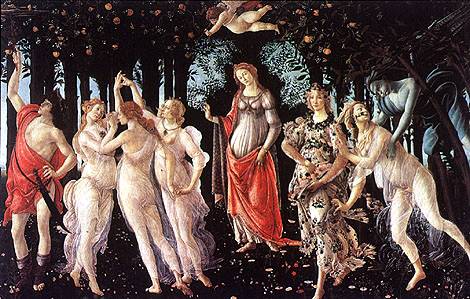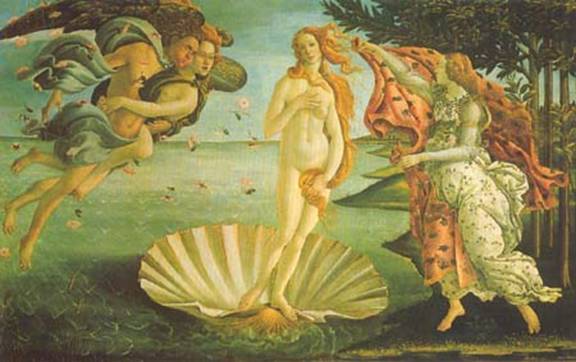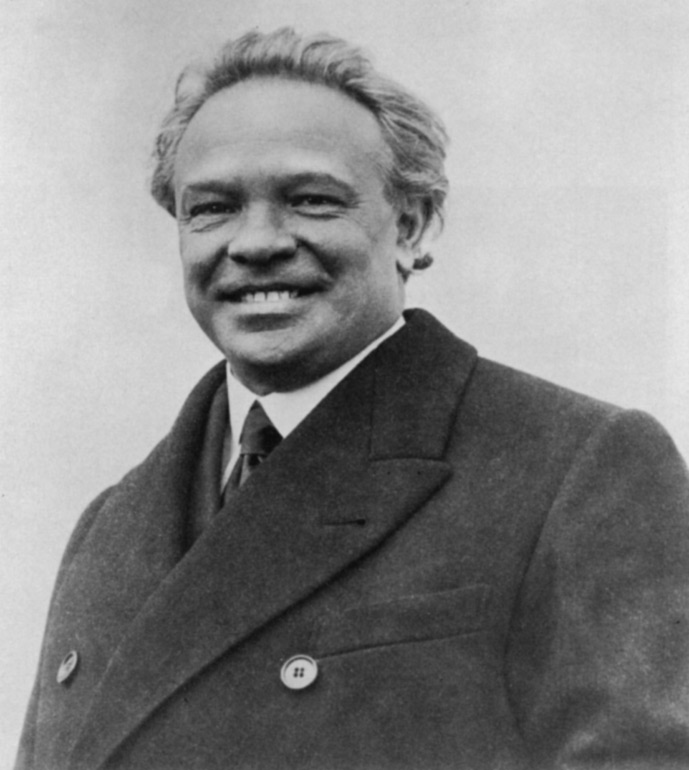Ottorino Respighi (1879-1936)
Born July 9, 1879 in Bologna.
Died April 18, 1936 in Rome.
Trittico Botticelliano
Composed in 1927.
First Performance: September 27, 1927, at the Konzerthous of Vienna with the composer conducting.
Instrumentation: Flute, Oboe, Clarinet, Bassoon, Horn, Trumpet, Triangle, Campanelli, Celeste, Harp, Piano, Strings.
Respighi studied with Luigi Torchi at the Liceo Musicale in Bologna who was the compiler of “L’arte musicale in Italia nei secoli XIV-XVII”. In 1900-01 and again in 1902-03 he visited St. Petersburg, Russia as a violinist in the opera orchestra. While there he studied with Rimsky-Korsakov which had a profound influence on his orchestral scoring.
He traveled widely as a violinist and violist between 1903 and 1908. He settled in Rome in 1913 after being appointed professor of composition at the Liceo (later Conservatorio) di Santa Cecilia.
His best known works are his Roman pieces beginning with Fountains of Rome (Fontane di Roma) (1914-16), Pines of Rome (Pini di Roma) (1923-4), and finally the Roman Festivals (Feste Romane) (1928).
Respighi began work on the Trittico Botticelliano in March 1927 upon returning from his first tour of the United States. Elizabeth Sprague Coolidge organized the concert for the premiere later that year.
The Botticelli Triptych was inspired by three paintings by Florentine painter Sandro Botticelli (1445-1510). All three paintings are now in the Galleria degli Uffizi in Florence.
His interest in Gregorian chant, modality and other archaisms are on appropriately on display here.
La Primavera (Spring) was painted around 1482 and is tempera on wood panel which measures 6’8”” x 10’4”.

This first movement begins with a sparkling repeated figure in played by the strings while the horns then the trumpets play a leaping motif.
Example 1.

The bassoons introduce the first theme.
Example 2. Bassoons

The music settles down while the oboes play a simple a simple theme resembling a chant against a syncopated bassoon accompaniment.
Example 3.

This theme evolves into another simple but more animated theme.
Example 4.

The violins once begin to play the shimmering trills from the opening while these themes are fragmented until the trumpets return the initial bassoon melody followed by the second and third themes. The movement ends as it began with shimmering trills played by the strings.
Adorazione dei magi (Adoration of the Magi), 1475.

Veni, Veni Emmanuel is a part of the O Antiphons that are used for Vespers during the week before Christmas. These antiphons (responses to psalms) date back to at least the ninth century. The hymn itself was composed in the 12th century in French and the Latin version of the hymn is from the 18th century.
The movement begins with a bassoon solo.
Example 5. Opening bassoon solo

Example 6. flute arabesque

Followed by an arabesque played by the flute
The famous antiphon is introduced by the flute and bassoon two octaves apart.
Example 7. Veni, flute and bassoon 2 octaves apart

A moderato section with a marching theme derived from the antiphon is punctuated by “oriental” clanging interjections from the celeste, triangle piano and harp. There is an oboe solo followed by a flute arabesque.
A violin solo combines the flute arabesque with ornamented trills recalling the opening of the first movement.
The Bassoon returns with a new solo.
Bassoon solo material is picked up by the oboe while the bassoon plays its opening solo melody underneath.
After a final flute arabesque the opening bassoon solo returns to close the movement quietly.
La nascita di Venere (The Birth of Venus) was painted between 1484 and 1486. It is tempera on canvas and measures 5’87/8 ” x 9’17/8″.

The final movement opens with the strings very softly playing an undulating theme that recalls waves. At the same time the celeste and harp fragmentally outline what will become the main theme of the movement.
To simulate Venus getting closer and closer to the shore on her half shell the movement begins very softly and gradually builds in volume.
Example 11. Waves

The woodwinds play short mottos until they pick up the wave theme. At this point the strings play the long sustained main theme homophonically in octaves.
Example 12. Strings in octaves

The woodwinds eventually join the strings in their main theme leaving only the celeste, harp and piano to continue with the wave motto leading to the movements climax.
A short coda begins with the wave motto again in the strings very softly as in the beginning. A few of the woodwind interjections return as the movement winds down with the waves slowing to a standstill as Venus steps ashore.
Resources
[amazon template=iframe image&asin=B000003CYL][amazon template=iframe image&asin=B0038CAMMS][amazon template=iframe image&asin=0634033581][amazon template=iframe image&asin=B0000041OT]




One Reply to “Respighi : Trittico Botticelliano”